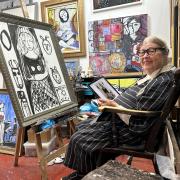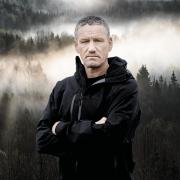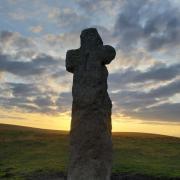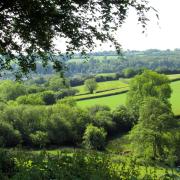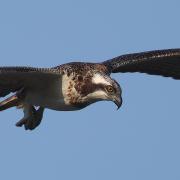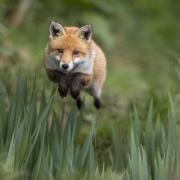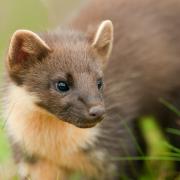High on the hills of Dartmoor cowboys are roaming, ready for a cattle drive. Devon Life cowgirl Naomi Price saddles up and gets ready to ride. The Western has arrived in the West Country
As far as the eye can see, the big sky country is a canvas of bleached prairie. Across it streams a caravan of cattle, jet-black against the bone-white grasses. At their backs and flanks is a team of sleek quarter-horses ridden by wranglers in full cowboy regalia, all anticipating their every step. It’s the stuff of Western movies.

After a day like no other, elated clients are pinging their videos around the world. ‘You never said you were going to a ranch in Montana!’ comes the reaction to the wilderness scenes. But then, panning in the other direction, beyond the massive, verdant plain 2,000 feet below, the next clip shows a long, white thatched structure far away, dwarfed off the scale into a toy farm. Hello, that red soil looks rather distinctive, say Devon friends, and... isn’t that a Devon longhouse?
For this is no other than the Wild West of west Devon, and the surrounding 10,000 acres of this part of Dartmoor are the sublime office of Phil and Mandi Heard, the duo alone in the UK in using horses Western-style to work the 400 head of cattle - the Angus and Welsh Black - that the family has farmed for generations.

Every year, on May 1, Phil, Mandi and their exceptional team drive the cattle from their farm at Meldon to the uplands of Dartmoor, the land over which they enjoy common grazing rights. And if you can ride, have got to grips with the Western way, if you thrill to the prospect of several seasons in one day and a horse with the wind up its tail, you too can join them on the adventure. Yee-ha, or then again: yee-arr.
So, on a blustery, atmospheric morning, we pass over the Meldon dam, a feat of engineering spectacular in itself, its 50 metres of water coursing down the barrage of sheer wall. It’s the last man-made structure to be seen before five hours of riding over country that has remained unchanged through the centuries.

Then, at the foot of the moor, with horses and riders strategically stationed to head cattle away from exit points, the drive begins. We ride behind at first, then radiate out into side and rear positions to contain the herd of excited youngsters. Along they jostle, sparring, jinking and crowding their way along, impatient for their season ticket to the summer that lies ahead of them.
On we press, literally. The cattle need to keep on moving, and the horses behind are right at their rumps, urging on the herd, delivering a nudge or a nip to any heifer who lags behind. Further we go, via a narrow drovers’ ‘road’ – a string of granite scree, flints and ledges, following now where the cattle scramble between cascading altitude run-off.

Bog to the left, bog to the right: one ill-judged move towards a patch of inviting grass can land you both into something to be avoided at all costs. But your moor-wise, sure-footed horse knows this better than anyone else. The pitfalls of Dartmoor are in their blood, which is why many of them hover a fifth-sense forefoot above the bog before committing themselves.
By now we’re onto dry upward terrain, accompanied by a herd of wild Dartmoor ponies who have tagged along for the ride. The weather comes sheeting in, the wind howls to drown out Mandi’s commands, your mount is going sideways... but the posse remains intact.

Then in an instant, the heavens clear, opening up the vista of majesty onto probably the most beautiful place on earth. Job done, the horses rest. The cattle wander off into their summer of content. Above, the buzzards wheel and mew, riding the thermals. Below, a stand of gorse bushes throws out its coconutty scent, an exotic promise of the summer to come. A bumblebee starts up. Over a deep river on the homeward stretch, Lloyd, one of the Heards’ three sons, scoops up Puppy, apprentice in the art of cattle-mustering, and gives him a lift home across his saddle.
For Phil and Mandi, beginning Dartmoor Riding Holidays was an organic process that evolved with the farming and equestrian life that is part of their fibre. Where most farmers use quad bikes to move cattle, horses are far more effective. They don’t intimidate them, and they can manage difficult terrain that’s too steep or unsuitable for mechanized vehicles.

Cattle are the life-blood of Dartmoor. Huge swathes of heather once blossomed over the landscape: think Widgery, the Victorian painter, for whom no watercolour was complete without a daubing of characteristic foreground purple. Now the moor has been all but subsumed by the land-grabbing Molinia grass which rampages unchecked throughout the National Park, running amok over biodiversity. It’s cattle that can make the greatest impact in restoring the land to the unique eco-system it once was.
Visiting working ranches in North America and Patagonia, Phil and Mandi observed the control of Molinia, realised that horses were far the best way to move cattle, and furthermore, that the riding on Dartmoor was as good, if not better. Why not integrate the lot?

So, 12 years ago, they tentatively began the business. Its popularity outgrew their own kitchen so rapidly that space ran out for dining clients. Now, riders begin and end their day in the Guest Lodge, kitted out with Western paraphernalia in a humorously kitsch evocation of Devon-meets-the-Wild West: a snaffle bit for the loo chain pull, a loop of line-dancing music in the background. An ancient granite gatepost, hoisted by a forklift into the kitchen, forms the lintel for the woodburner and a dung-spreader chain supports the lights.
When people suggested turning riding into a business, the Heards were incredulous: ‘Goodness, we couldn’t possibly get people to pay to move cattle!’ But pay they do, for the experience of a lifetime. Beyond it, there’s something you can’t put a price on. ‘There’s always one tearful person at the end of the week. They’ve built a tremendous bond with the horse, gone through difficult country and achieved a purpose.’ Gis a job, Phil.

TAKE A RIDE
Holidays may be booked through Unicorn Trails, the dedicated horse safari specialists, or through Dartmoor Riding Holidays (DRH). Besides Spring Turnout, other variations are available throughout the summer, revolving around the dates of the farming calendar. At the back end of the year the migration happens in reverse, when the cattle are returned down to hospitable winter pastures . DRH also run Western Experience trips by way of introduction to Western riding techniques, along with instruction with ranch - sorting and how to separate or ‘cut’ cattle into pens. Accomodation is at The Castle Inn at Lydford, which offers exceptional hospitality . A three-day trip with DRH, a double room at the Castle Inn with breakfast and lunch cost s £ 1 ,1 70 pp based on two sharing; for six days it’ £ 1,920.
Contacts: unicorntrails.com; philheardmeldon@gmail.com; castleinnlydford.co.uk

Malcolm Snelgrove Dartmoor Horse Photographer is a renowned horse photographer, specialising in capturing the wild essence of horses and riders on Dartmoor. With over a decade of experience, he skilfully documents these majestic creatures and the breath-taking landscapes of Dartmoor, showcasing their beauty and ecological significance. snelgrove.com








